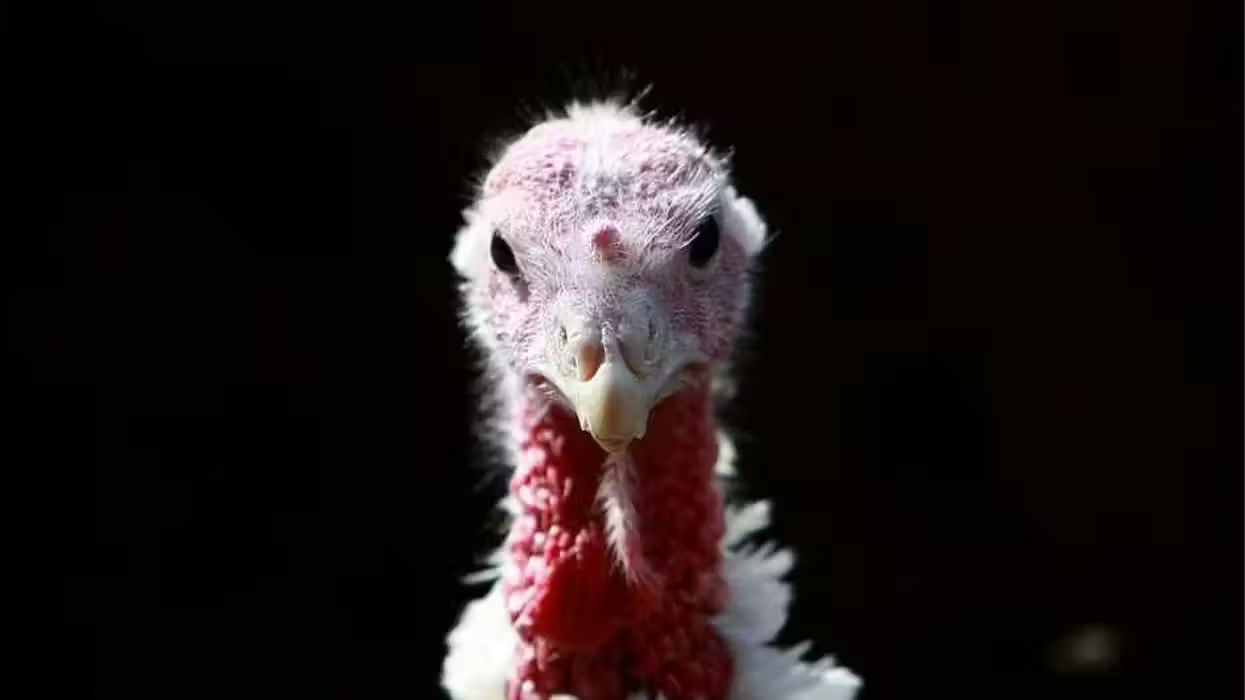
Justin Sullivan/Getty Images

From celery au naturel to roasted swan, these recipes are sure to tempt the most discriminating palates.
This Thanksgiving, consider the poor turkey. Is there any animal we consume with less gusto?
It has become something of annual tradition to denigrate the day's traditional fare. Nearly 35% of Americans claim turkey is their least favorite part of the feast, according to one recent survey.
This vintage Better Homes and Gardens recipe is a bit of a cheat, as it does use turkey — although not in any form you're likely to recognize
The internet just stokes the hatred. Every year the same tiresome "contrarian" opinions: "Stop pretending you like turkey. It's no good on Thanksgiving, or any other day."
Even celebrity chefs can't resist punching down. "Turkey is wildly overrated," says restaurateur David Chang.
"The only reason to cook the turkey is to get the gravy, and then you can just give the turkey away."
We must admit that turkey-haters have a point. Yes, turkey meat can be dry and flavorless (although brining is a dependable way to avoid that). And yes, the tradition of eating turkey — and most Thanksgiving foods — was essentially created by advertising in the early 20th century. (College freshman home for fall break voice: "It's all a scam by Big Cranberry!")
While we're content to stick with the standard flightless fowl, there were plenty of other contenders in the great battle for the Thanksgiving table. As a service, we provide the following recipes for anyone wanting to change it up.
Among the meats served at the first Thanksgiving in Plymouth would surely have been this vital freshwater food source. The 1622 promotional pamphlet for the Plymouth colony "Mourt's Relation" describes how the Wampanoag native Tisquantum (better known as Squanto) taught the Pilgrims to catch the slippery, succulent treats.
Tisquantum went at noon to fish for Eels, at night he came home with as many as he could well lift in one hand, which our people were glad of, they were fat & sweet, he trod them out with his feet, and so caught them with his hands, without any other Instrument.
Here's how they might have prepared it:
Ingredients
Instructions
Long a favorite of European royals (peasants were forbidden to hunt them), swan was plentiful in the New World and was most likely one of the waterfowl consumed at the first Thanksgiving.
Here's a recipe from Hannah Woolley’s "The Queen-like Closet," (1670) a cookbook that later colonists would have had in their kitchens:
To bake a Swan.
Scald it and take out the bones, and parboil it, then season it very well with Pepper, Salt and Ginger, then lard it, and put it in a deep Coffin of Rye Paste with store of Butter, close it and bake it very well, and when it is baked, fill up the Vent-hole with melted Butter, and so keep it; serve it in as you do the Beef-Pie.
For something more elaborate, here's a preparation from the late 14th century cookbook “Le Menagier de Paris”:
Pluck like a chicken or goose, scald, or boil; spit, skewer in four places, and roast with all its feet and beak, and leave the head unplucked; and eat with yellow pepper.
Item, if you wish, it may be gilded.
Item, when you kill it, you should split its head down to the shoulders.
Item, sometimes they are skinned and reclothed.
RECLOTHED SWAN in its skin with all the feathers. Take it and split it between the shoulders, and cut it along the stomach: then take off the skin from the neck cut at the shoulders, holding the body by the feet; then put it on the spit, and skewer it and gild it. And when it is cooked, it must be reclothed in its skin, and let the neck be nice and straight or flat; and let it be eaten with yellow pepper.
Though extinct for more than a century, passenger pigeons were once as abundant as the kind you see fouling statues in urban parks. While we wouldn't recommend eating those birds, Cornish game hen or squab make a decent substitute.
Ingredients
Instructions
1. Prepare the meat
2. Make the gravy
3. Assemble the pie
4. Bake
Outdoor Dutch oven method (historical):
Modern oven method:
5. Serve. Let cool slightly before slicing.
In 1904, railroad heir George Vanderbilt and his wife, Edith, hosted a lavish Thanksgiving at their Asheville estate, Biltmore. Turkey was on the menu — but so were calf's brains. Here's one preparation that guarantees a delicate, custardy mouthfeel:
Ingredients
Instructions
1. Prep the brains
2. Cook the mushrooms
3. Add the brains
4. Finish the sauce
5. Serve. Spoon the mixture over warm toast. Serve immediately.
Now the most unwanted vegetable on the crudite platter, this Bloody Mary garnish was a highly coveted status symbol of the Gilded Age (it was hard to grow). Everyone will want the recipe.
Ingredients
Instructions
1. Trim the celery
2. Refresh the stalks
3. Present with appropriate ceremony
4. Serve. Place the celery in the center of the table. Offer a pinch dish of salt on the side.
Note: In the late 19th century, this was considered a showpiece delicacy. Your guests are encouraged to admire its beauty before eating it exactly as it is.
This vintage Better Homes and Gardens recipe is a bit of a cheat, as it does use turkey — although not in any form you're likely to recognize.
Ingredients
Instructions
1. Make the gelatin base
2. Prepare the turkey layer
3. Prepare the sour cream-pear layer
4. Add second layer
5. Unmold and serve